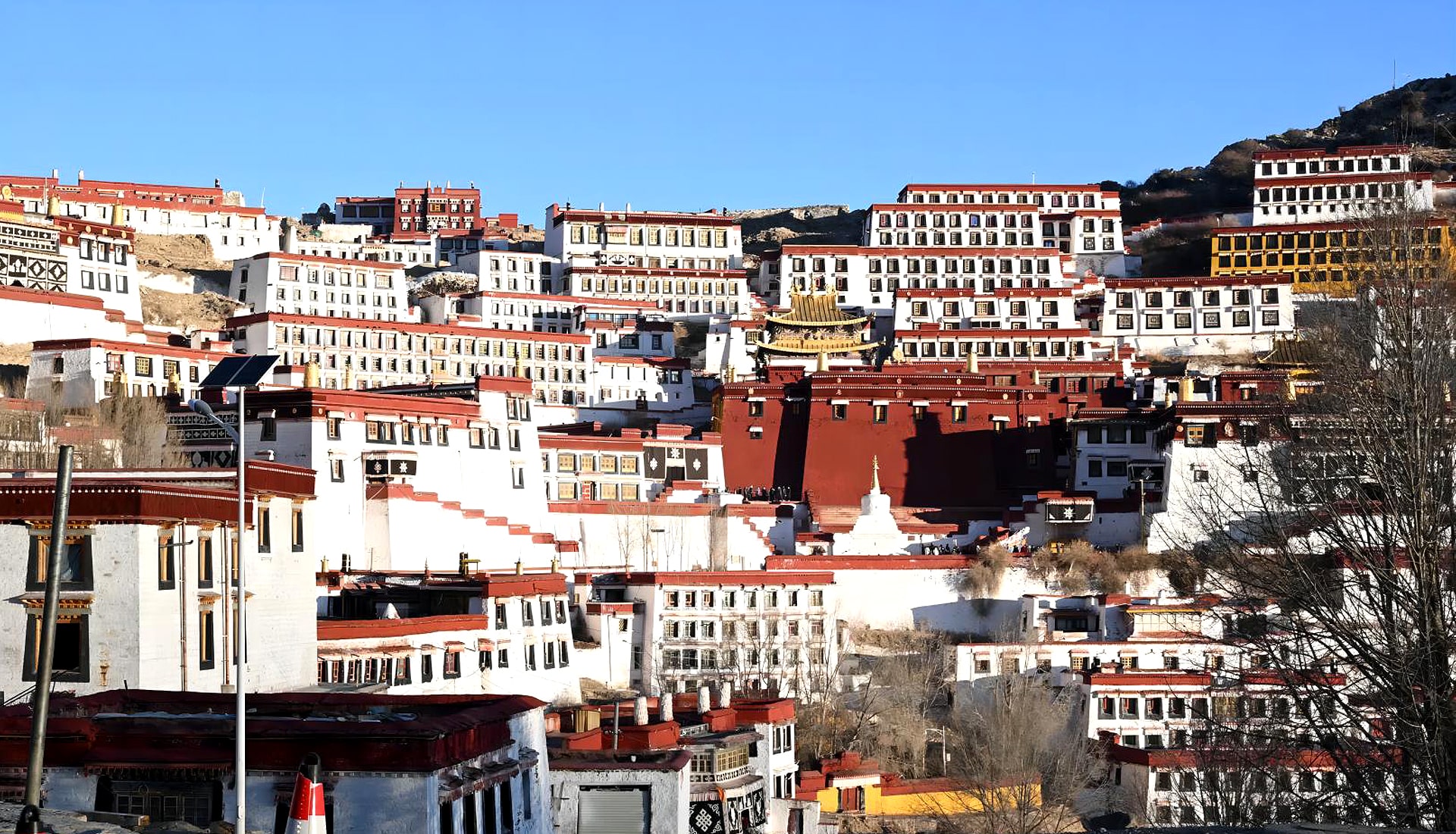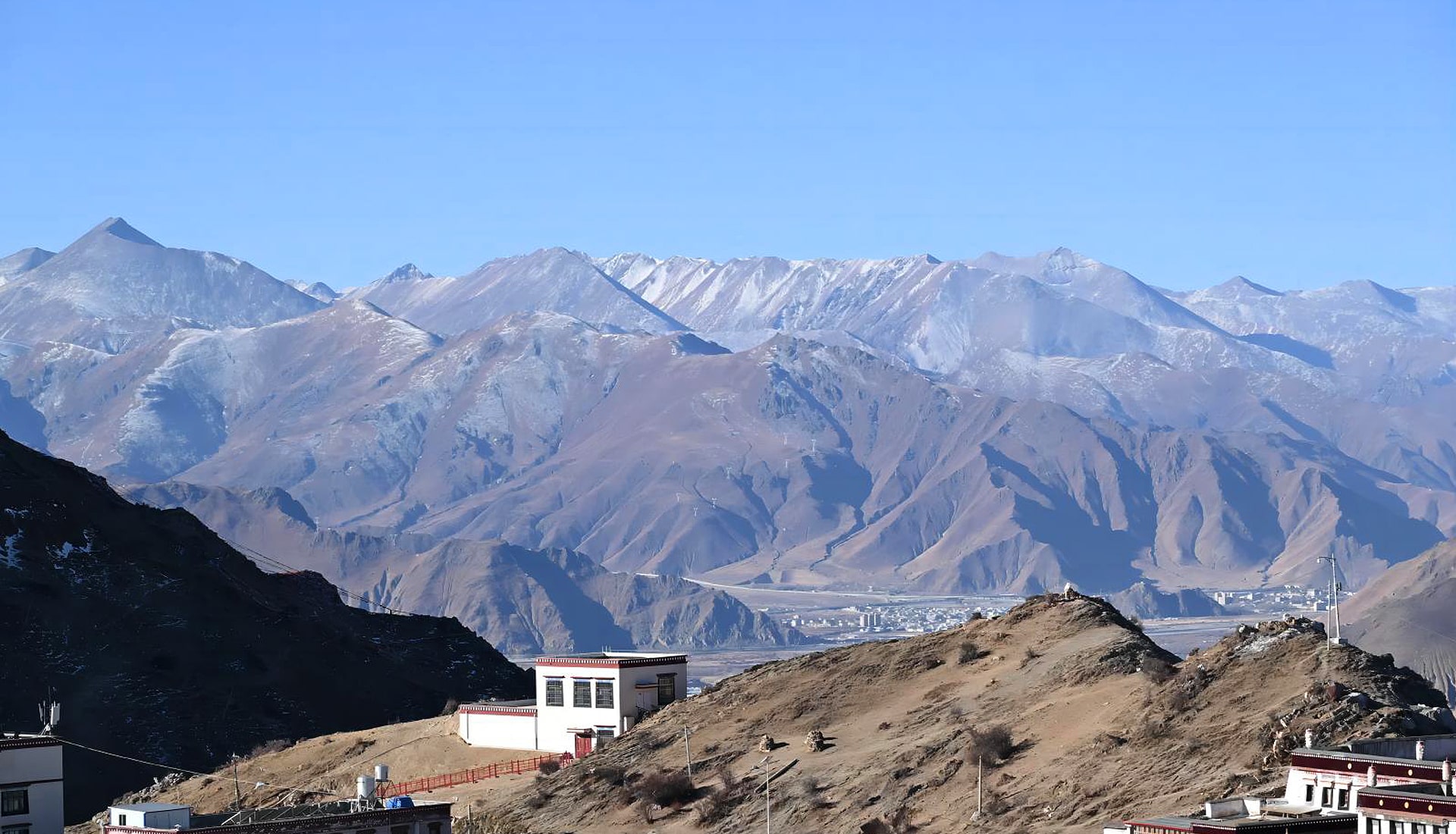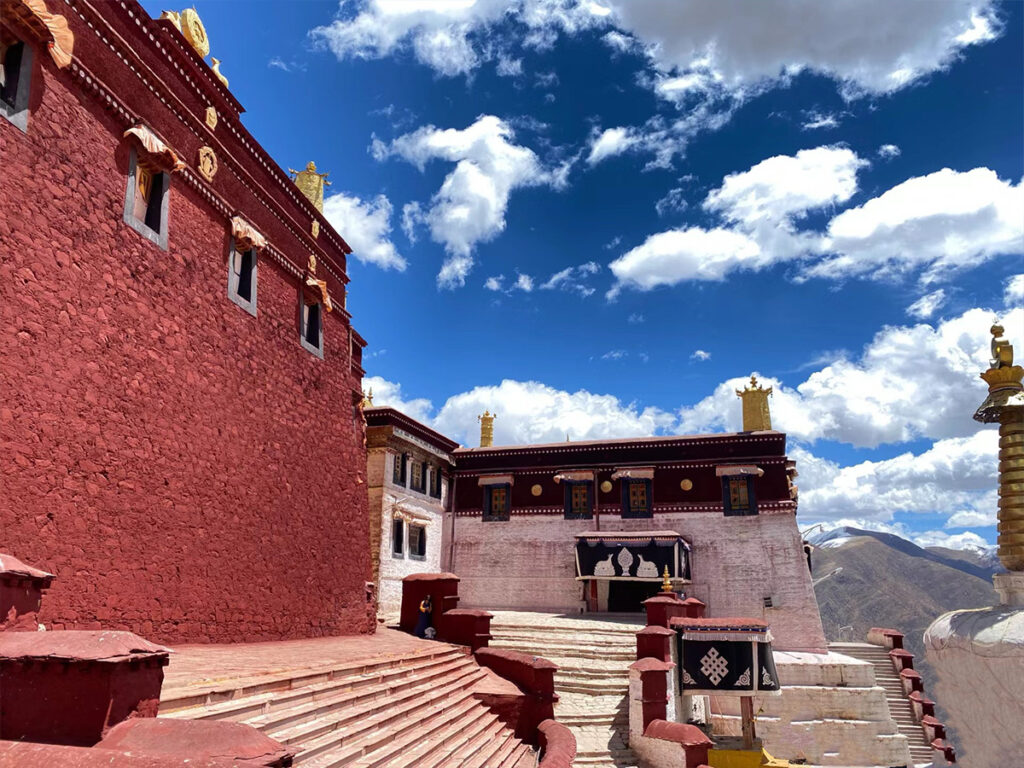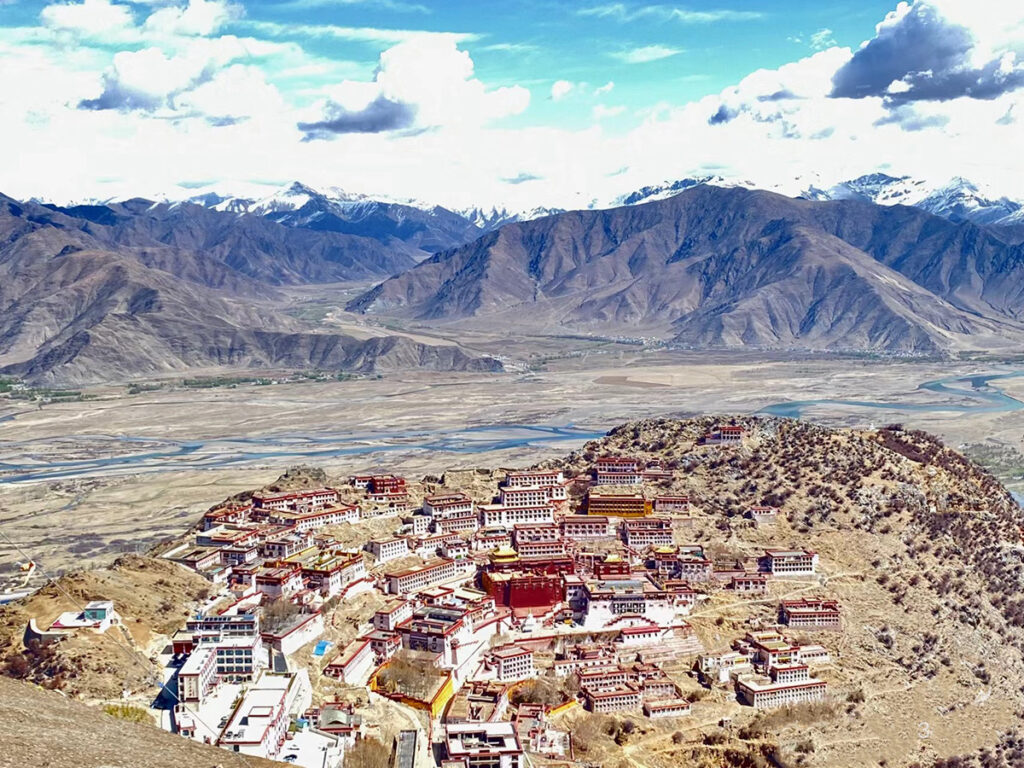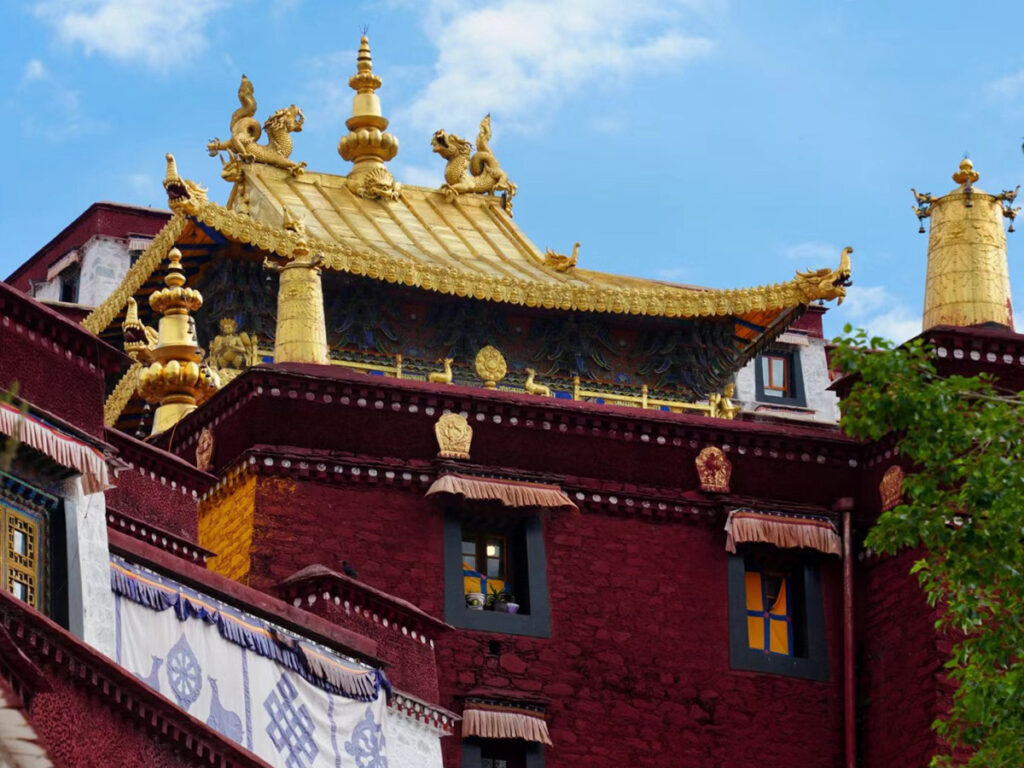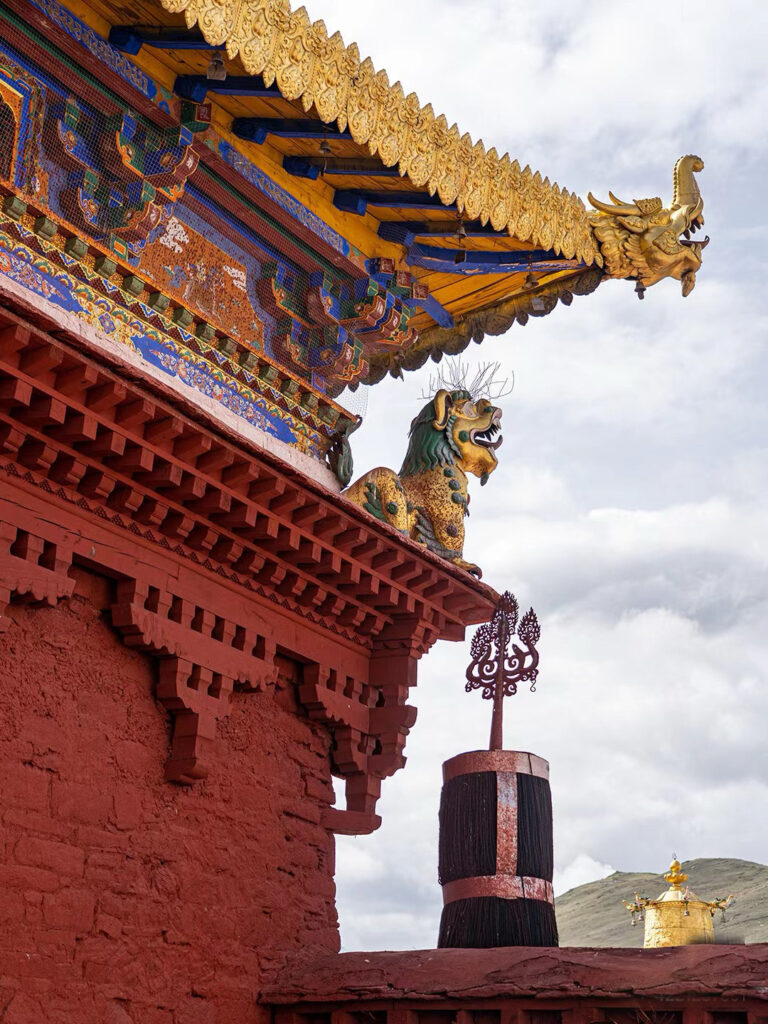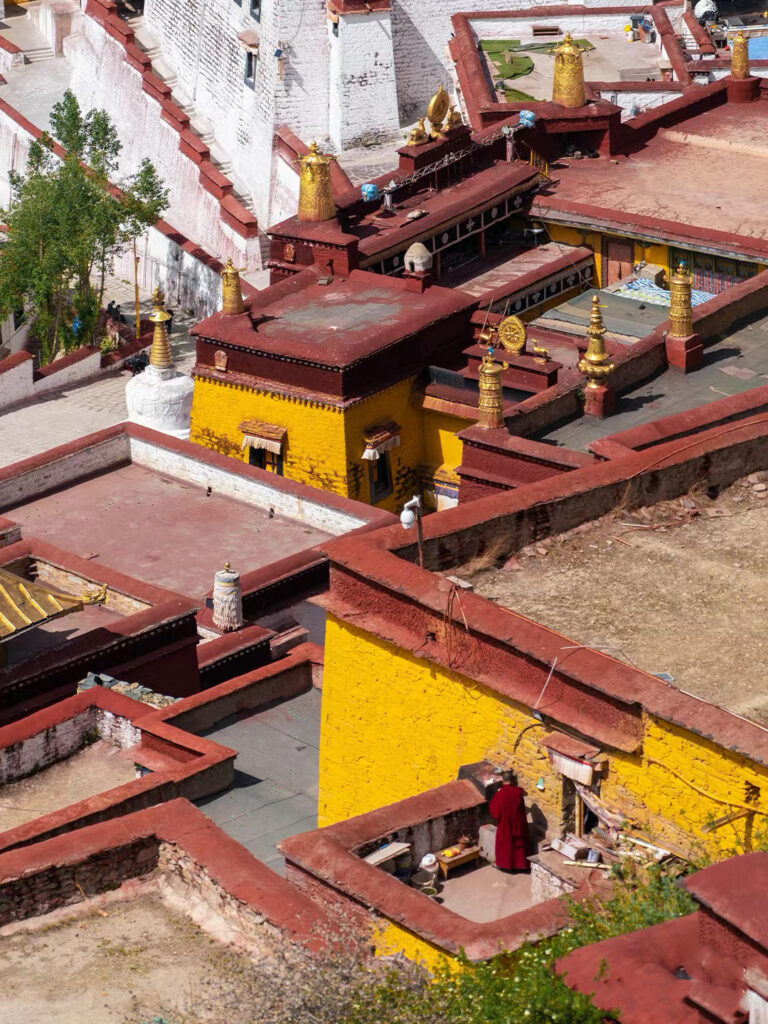The Architectural and Artistic Heritage of Ganden Monastery
Ganden Monastery spans a total architectural area of over 30,000 square meters. Its largest structure is the Main Assembly Hall (Tsokchen), which is said to contain 108 columns and covers more than 1,600 square meters, accommodating over 3,000 monks for chanting and ceremonies—a true centerpiece of the monastery.
The Shartse and Jangtse Dratsangs (monastic colleges) are also impressive in scale, each occupying nearly 1,000 square meters. Inside, visitors can admire exquisitely detailed murals and Buddhist statues, showcasing the refinement of Tibetan Buddhist art.
Another significant hall is Yamabang, dedicated to the monastery’s protector deity. Slightly smaller in scale than the main chapels, its rear wall features a massive natural boulder, revered by monks as the “Flying Stone.” According to legend, it miraculously flew to Ganden from a sacred site in India called Yamba Well, giving the temple its name.
The murals inside Yamabang are traditionally believed to be painted by Khedrup Je, one of Tsongkhapa’s eight principal disciples and the founding abbot of Tashilhunpo Monastery in Shigatse. Khedrup Je was later posthumously honored as the First Panchen Lama and was renowned for his artistic talents. The mural style is noted for its graceful lines and subdued, elegant colors, making it a quintessential example of 15th-century Tibetan mural art.
It is also said that this very hall once housed an imperial gemstone-studded suit of armor, bestowed by Emperor Qianlong of the Qing Dynasty, engraved with inscriptions in Chinese, Tibetan, Manchu, and Mongolian—a rare artifact that reflects the deep historical ties between Tibetan Buddhism and the imperial court.

